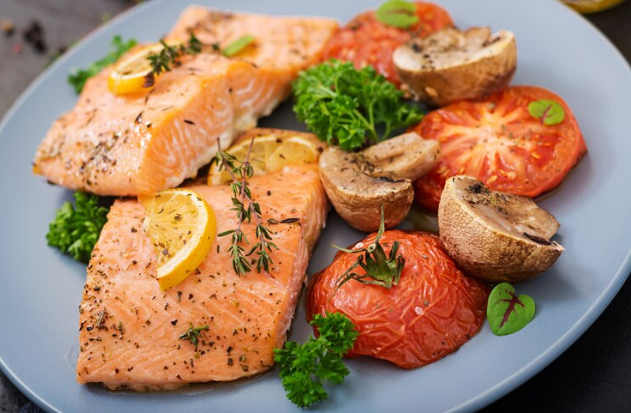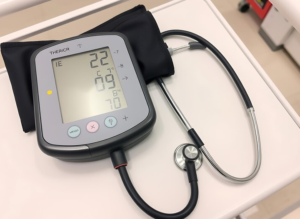Salmon is an exquisite fish that most of us will take the time to prepare. But as far as leftovers are concerned, how long is a perfectly cooked fillet good for?
Safe food handling is serious! According to the USDA, about 48 million Americans get ill because of food items they ingested. Do not let your perfectly cooked salmon be in food jeopardy!

How Long Can Cooked Salmon Stay Fresh in the Refrigerator?
In terms of seafood, in particular salmon, the knowledge of the maximum storage duration is extremely important in order never to experience bad taste and avoid problems with food poisoning. So what is the lifespan of cooked salmon in the fridge?
- Ideal Refrigeration Temperature (40°F or Below)
Cooked salmon can be stored in a refrigerator temperature of 40 °F (4 °C) per the USDA standards. This will prolong the crustacean’s healing and preservation period. The purchase of a thermometer of this kind is fully justifiable and very useful, especially if you keep other seafood and meat in the fridge. - Recommended Maximum Storage Time (3-4 Days)
Storing cooked salmon safely should, from the date of cooking, last 3 – 4 days in a refrigerator. After this time, one should not even eat the fish even if it appears normal, since the threat of bacteria makes the fish unsafe for consumption. - Importance of Proper Storage Containers
Once the fish has been cooked, using a high-quality, air-tight storage container will certainly enhance its storage time. Air-tight storage containers will also ensure that moisture and odors do not escape from the fish making it stay fresh for a long time and also stopping other odors from reaching the salmon. - Signs of Freshness vs. Spoilage
At first, cooked salmon has a mild smell and is brightly colored, but as time passes and the fish starts spoiling, it acquires a foul blurry, or slimy texture with a sour smell. Such changes in the salmon mean that it is no longer safe to consume the fish anymore.
Related Articles:
- How to Smoke Salmon at Home: A Perfect Guide for 2024
- How Long To Bake Salmon At 400?
- Can You Freeze Smoked Salmon?
Proper Storage Techniques for Cooked Salmon
However, there are certain quick and easy-to-follow techniques to maximize the quality of the salmon. The right containers and careful storage and handling will ensure that the fish remains fresh and delicious.
- Cooling Salmon Before Refrigeration
The salmon has already been cooked, so it is best to allow it to cool down to room temperature before chilling it in the fridge. Cool the food first because it will elevate the temperature of the refrigerator which can cause the other food to go bad. However, take into consideration that you cannot also leave it outside for too long, two hours is the maximum time otherwise the bacteria can multiply at room temperature. - Best Types of Storage Containers
The best way to store cooked salmon is in a glass or plastic container that has a tight seal. In a bind, many people will turn to a resealable freezer bag, ensuring that any excess air is squeezed out in order to help keep foods fresh. The tightness of the container also helps to minimize the amount of moisture that escapes and impairs the texture and taste of the fish. - Importance of Airtight Sealing
Sealing the fish airtight will shield the fish from the air, which will help ensure that the salmon keeps its flavor and freshness while also helping in the reduction of the growth of bacteria. For fish, the lower the air, the better. - Avoiding Temperature Fluctuations
The best place to put salmon which is already cooked is at the back of the fridge since that’s its coldest region and where the thermal variation is minimized. Do not open and close the refrigerator door excessively since doing that raises the internal heat of the fridge which may not be suitable for the salmon. - Preventing Cross-Contamination
To lessen the risk of salmon cross-contamination, and wounds the prepared salmon should be stored away from raw meats, seafood, or any other foods that have high-risk characteristics. It is also recommended to store it in a sealed container or on a separate shelf to minimize the likelihood of bacteria transfer.
Signs Your Cooked Salmon Has Gone Bad
During storage, however, there are instances where even the most carefully preserved salmon will develop a foul odor. These are the permanent indicators that it’s time to dispose of your fish:
- Visual Indicators of Spoilage
Salmon that is fresh should not dry out and should have a rich and vibrant color. Once a salmon fish has gone bad, it will discolor, in particular, the color may change to a dull gray or faint yellow and may have no spots but a white coating. - Smell Tests for Detecting Rotten Fish
Salmon that has been freshly caught has a slight odor. But the salmon exudes a strong, rancid, or fishy smell, which indicates spoilt meat that is dangerous to eat. - Texture Changes to Watch For
A salmon that has gone bad will be slimy or sticky salmon. If the salmon has a tacky or puffy feel to it, then I would advise not taking it. - When to Err on the Side of Caution and Discard
Listen to your gut. If salmon has an unusual smell, appearance, or texture, it’s prudent to toss it as it could have adverse consequences.
Freezing Cooked Salmon: Extended Storage Options
When you cook more salmon than you would want to eat in a couple of days, freezing cooked salmon is a good way to prolong its life allowing you to eat it in the future.
- Maximum Freezer Storage Time
When you freeze it, cooked salmon won’t go bad on its own for a total of three months. That said prepare to eat it during this period for the avoidance of disappointment in quality. - Best Freezing Practices
One thing is certain – for the best results, you must use a freezer-safe bag or an airtight container to preserve the cooked salmon. Always use plastic wrap to cover everything and avoid freezer burn, which will dry out the fish and negatively change its flavor. - Proper Thawing Techniques
If you must thaw salmon, the best and most reliable method is to place it frozen overnight in a refrigerator cooling down the salmon. Do not leave it out at room temperature as this can promote bacteria. Need a faster method? Place the container in the refrigerator overnight. - Quality Preservation Tips
Mark the container with the date you put it into storage so that you can keep track of how long it has been there. Relatively, storing it immediately after cooking and sealing in tight will allow you to preserve its flavor and outside appeal.
Reheating Stored Salmon Safely
When you’re ready to enjoy your stored salmon, reheating it properly can help maintain both safety and taste.
- Recommended Internal Temperature
In order to safely enjoy the fish, it must be reheated to an internal temperature of 145ºF (63ºC) for salmon. Any bacteria that might form during the period of storage at this temperature dies. - Best Reheating Methods
Recommended reheating guidelines suggest the use of an oven at about 275 degrees Fahrenheit, for about 10 minutes or using the microwave at the low setting; the stovetop may be used if low heat is used while covering this specific dish. Methods such as the above ensure that the fish is adequately heated without overcooking the fish. - Avoiding Repeated Reheating
Food that has been reheated loses some value properties. When reheating salmon, do it for the portion that you want to consume, this way having to reheat the same portion will not happen. - Maintaining Salmon’s Moisture and Flavor
To avoid having the fish dry out, make sure to sprinkle some water on the fish, or place a damp paper towel on the fish. This will help in retaining its flavor as well as the natural juices.



